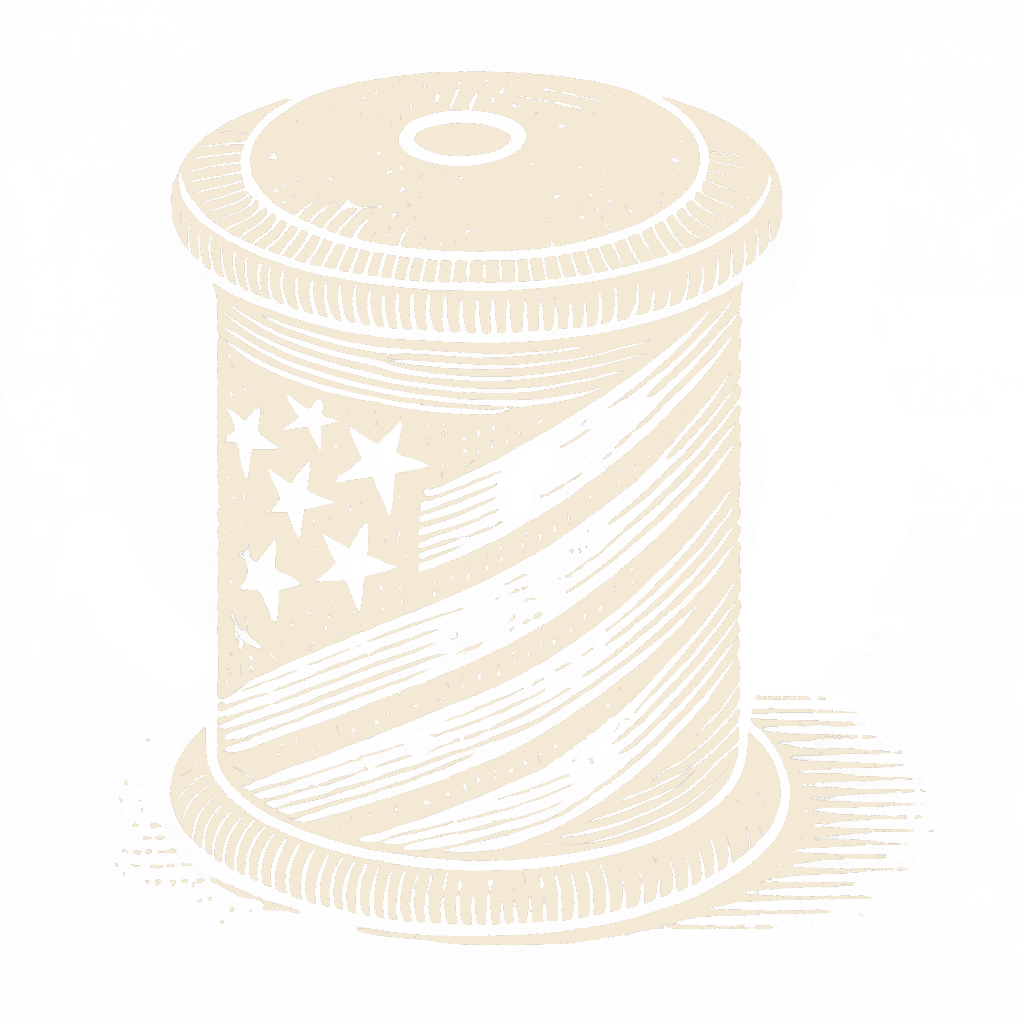Tapestry Glossaries
Explore the terminology and techniques used in traditional tapestry making. Our comprehensive glossaries provide detailed explanations of stitching methods, materials, tools, and specialized terminology used throughout the America's Tapestry project.
Couching
A technique where threads are laid on the surface of the fabric and secured with small stitches. This method was often used to create raised elements or to incorporate metallic threads that were too thick to pass through the fabric.
Crewel Embroidery
A technique of surface embroidery using wool thread on a linen or cotton foundation fabric. Dating back to medieval England, crewel embroidery was particularly popular in colonial America for decorative household items and clothing.
Embroidery Frame
A device used to hold fabric taut while stitching, allowing for more precise needlework. Colonial frames were often wooden hoops or rectangular frames that could be placed on a stand or held in the lap.
Linen Ground Cloth
The base fabric used in many traditional tapestries and embroideries. Made from flax fibers, linen provides a sturdy yet flexible foundation with a distinctive texture that was widely available in colonial America.
Long and Short Stitch
A filling stitch used to create shaded or graduated color areas in embroidery. It consists of alternating long and short stitches that blend colors together, creating a painterly effect.
Merino Wool
A fine, soft wool from Merino sheep, known for its elasticity and excellent color absorption when dyed. Used in high-quality embroidery and tapestry work where detail and texture are important.
Stem Stitch
A basic embroidery stitch used to outline shapes and create fine lines. The stitches overlap slightly to form a twisted rope-like line. This stitch was commonly used in colonial American samplers and embroidered pieces.
Tapestry Needle
A blunt-tipped needle with a large eye designed specifically for tapestry work. The blunt tip prevents splitting the ground fabric threads, while the large eye accommodates thicker yarns and threads.
Download Complete Glossary
Want a reference you can keep? Download our complete illustrated glossary of tapestry terms, techniques, and tools as a PDF for convenient reference.
Download Complete Glossary (PDF, 8.3MB)